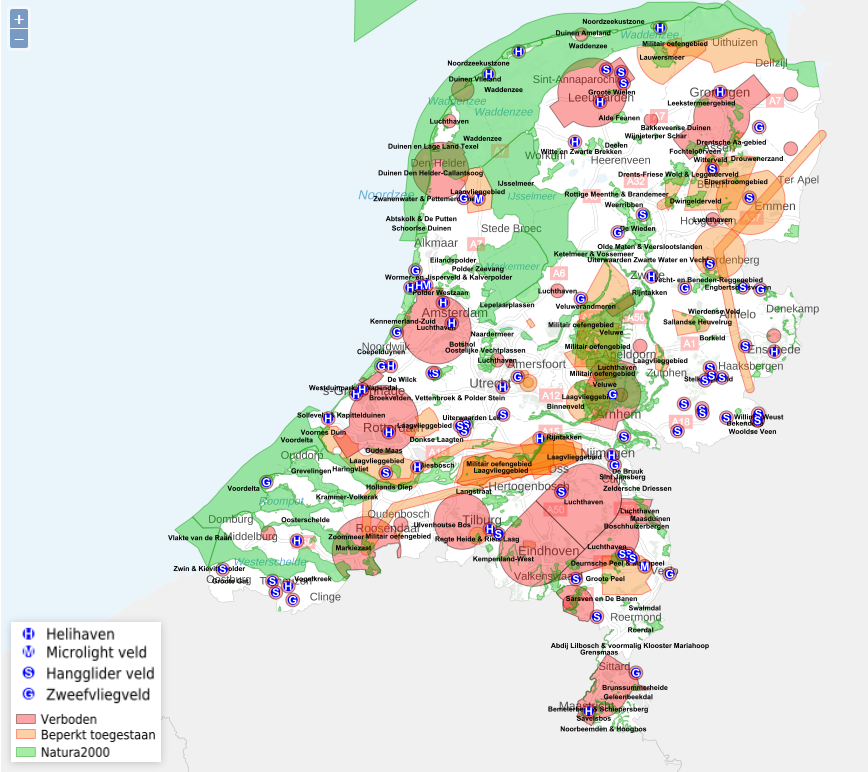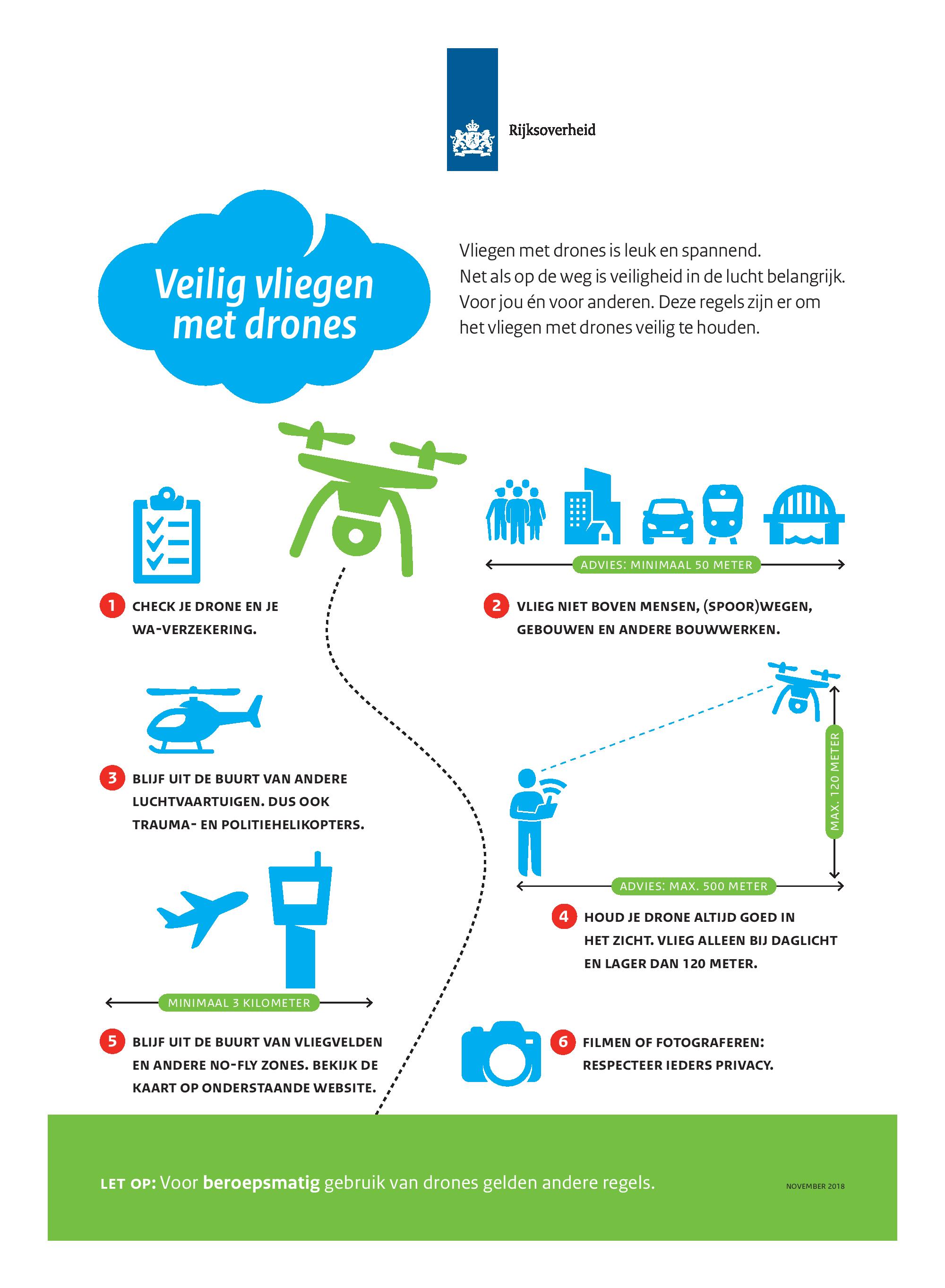Present situation - Group 4 - 2018/2019, Semester B, Quartile 3: Difference between revisions
No edit summary |
|||
| Line 90: | Line 90: | ||
---- | ---- | ||
Back to the [[PRE2018_3_Group4 | root page]]. | Back to the [[PRE2018_3_Group4 | root page]]. | ||
= References = | |||
</references> | |||
Revision as of 19:17, 11 February 2019
<link rel="shortcut icon" href="https://www.tue.nl/favicon-64.ico" type="image/x-icon"> <link rel=http://cstwiki.wtb.tue.nl/index.php?title=PRE2018_3_Group4&action=edit"stylesheet" type="text/css" href="theme.css">
Present situation
In this section, we consider the present situation regarding the specific problem description. We discuss the current rules and regulations, current solutions, and the limitations of the current rules, regulations, and limitations.
Rules and regulations
Different countries have different rules and regulations when it comes to UAVs. Furthermore, distinctions are made between recreational use and commercial use. The United States of America (U.S.A.), for example, considers different rules when it comes to recreational use and commercial use. The requirements when flying a drone under commercial use are much stricter than flying a drone under recreational use. If one wants to fly under commercial use, one has to pass an FAA test and receive Part 107[1] certification. Furthermore, a drone needs to be registered so that the owner of the drone can be traced back in case this is needed.
A few guidelines to follow when flying a drone in the U.S.A are as follows[2]:
- Fly at or below 400 feet
- Keep your drone within sight
- Never fly near other aircraft, especially near airports
- Never fly over groups of people
- Never fly over stadiums or sports events
- Never fly near emergency response efforts such as fires
- Never fly under the influence
- Be aware of airspace requirements
There exist applications, available for smartphones and on the web, that display where a drone is allowed to fly. One example is AirMap that shows users that they should be at least five miles away from an airport to operate the drone without notifying the control tower of the airport. As you might have realised by now, the rules and regulations regarding drones are still a work in progress. As the rules and regulations per country differ significantly, we will solely focus on the rules and regulations considered in the Netherlands. This is only natural as the project is carried out in the Netherlands as well.
The Netherlands considers different rules and regulations based on the type of usage of the drone. The main categories specified by the Dutch Government consider recreational usage, commercial usage, and governmental usage.
Recreational use
When one flies a drone for personal purposes, one must abide by the Model Aeroplanes Regulations[3]. This means that one is not permitted to fly over groups of people or connected buildings. Furthermore, the drone needs to be in sight at all times. As soon as one sees an aeroplane or helicopter approaching, one must land as quickly as possible.
For reasons of safety, it is not allowed to fly a drone just anywhere. As mentioned earlier, it is not allowed to fly over groups of people. The Dutch Government has also set down requirements regarding the conditions under which it is allowed to fly. This includes but is not limited to:
- You must be able to see the drone at all times.
- You may not fly in the dark.
- You must always give priority to all other aircraft, such as aeroplanes, helicopters, gliders, et cetera. This means that you must land immediately once you see an aircraft approaching.
An overview map for the recreational use of drones has been depicted in Figure 1. This image accurately presents where one is allowed to fly their drone for recreational use and where it is forbidden to fly a drone. An interesting observation that can be done from this image is that in many significantly sized cities, it is forbidden to fly a drone at all.
There also exists a maximum weight for private drones of 25 kilograms. Making films and photographs with a drone may only be done for personal use. Here, the privacy right of others must be kept in mind. It is, for example, not allowed to secretly film someone. If pictures are being taken of a specific person or that person is being recorded, the person concerned must be informed. This leads us to the following point. The owner of a drone is responsible for any damage caused by their drone. This means that the owner of a drone is liable for any damages or injuries caused by their drone. Therefore, it is vital for the owner of a drone to verify whether their liability insurance covers any damage to drone incidents. In some cases, it is possible for the damage to run up to a substantial sum up to thousands of euros. We can further extend this by considering fines that can be given to drone pilots. Failing to abide by the rules mentioned above can result in either a warning or a fine. It is also possible for the controlled drone to be confiscated. The amount of the fine or the punishment given depends a lot on the type of violation caused by the drone usage. It will be considered if the drone was used in a professional setting or for hobby purposes. Furthermore, it will be considered if people were endangered or not.
The Dutch Government provides a summary in a visual form of what guidelines to follow during recreational usage of drones[4]. This visual can be observed in Figure 2. This figure accurately presents the most important rules to follow when using drones in a recreational setting. Note that the text on this figure is in Dutch.
Commercial use
Solutions
- Actual solutions being used
- Solutions that are going to be used within the next few years
Limitations
- Limitations regarding the jurisdiction
- Actual solutions not good enough / violations of laws
Back to the root page.
References
</references>
- ↑ U.S.A. Government https://www.faa.gov/news/fact_sheets/news_story.cfm?newsId=20516
- ↑ Jim Fisher, Drone Regulations: What You Need to Know, Aug. 23 (2018) https://www.pcmag.com/article2/0,2817,2491507,00.asp
- ↑ Dutch Government, Rules for recreational use of drones https://www.government.nl/topics/drone/rules-pertaining-to-recreational-use-of-drones
- ↑ Veilig vliegen met drones https://www.rijksoverheid.nl/binaries/content/gallery/rijksoverheid/content-afbeeldingen/onderwerpen/drone/drone-2018.jpg

